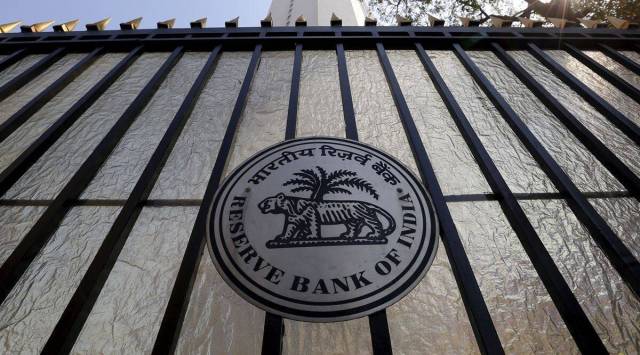Bank deposits of 1-3 years a hit due to interest rate hikes
Within the household sector, individuals accounted for 52.8 per cent share in total deposits. More than a half of households’ deposits during 2022-23 came from five states, namely, Maharashtra, Uttar Pradesh, NCT of Delhi, Karnataka and West Bengal.
 The RBI hiked repo rate by 250 basis points to 6.50 per cent since March 2022. (Express Photo)
The RBI hiked repo rate by 250 basis points to 6.50 per cent since March 2022. (Express Photo)With interest rates on deposits rising on the back of the repo rate hikes by the Reserve Bank of India (RBI), the share of term deposits with original maturity period of ‘one year to less than three years’ soared to 64.2 per cent as at end-March 2023 from 50.4 per cent a year ago.
According to RBI data, term deposits under the interest rate bucket of 6 per cent to less than 8 per cent recorded a significant surge in their share to total deposits and moved to 57.6 per cent as at end-March 2023 from 12.6 per cent in previous year. The RBI hiked repo rate by 250 basis points to 6.50 per cent since March 2022.
With monetary tightening during 2022-23, the return on term deposits had higher differential from saving deposit interest rate and accordingly, much higher share of deposit amount was mobilised under term deposits (73.2 per cent) as compared to 44.4 per cent in 2021-22. The share of term deposits in total deposits increased to 56.9 per cent in March 2023 as compared to 55.2 per cent a year ago, the RBI said.
Total deposits with commercial banks grew by 10.2 per cent during 2022-23 (10.0 per cent in 2021-22). Senior citizens contributed about one fifth of total deposits as of end-March 2023. “Their shares in total term and savings deposits stood at 22.2 per cent and 21.3 per cent, respectively,” the RBI said.
Deposits of commercial banks were at Rs 183.74 lakh crore as of May 19, 2023, showing a rise of Rs 18 lakh crore on a year-on-year basis.
The share of female senior citizens in total deposits with banks stood at 7.2 per cent. Contribution of female customers in total deposits increased to 20.5 per cent in March 2023 as compared to 19.8 per cent a year ago.
Among institutional ownership, household sector had 61.9 per cent share in aggregate deposits. Within the household sector, individuals accounted for 52.8 per cent share in total deposits. RBI said private sector banks attracted 45.6 per cent of incremental deposits and 53.7 per cent of households’ deposits during 2022-23. Their share increased further to 32.8 per cent in total deposits as at end-March 2023 from 31.5 per cent last year, it said. Among institutional ownership, household sector had 61.9 per cent share in aggregate deposits, the RBI said.
Within the household sector, individuals accounted for 52.8 per cent share in total deposits. More than a half of households’ deposits during 2022-23 came from five states, namely, Maharashtra, Uttar Pradesh, NCT of Delhi, Karnataka and West Bengal.
Many economists and analysts said that the RBI has come to the end of its rate hike cycle, and there may not be further hikes in subsequent monetary policies. “If liquidity is surplus and the repo rate hikes are not there, I don’t think banks will have any reason to increase deposit rates hereon,” said a senior banker with a state-run bank.
- 01
- 02
- 03
- 04
- 05































